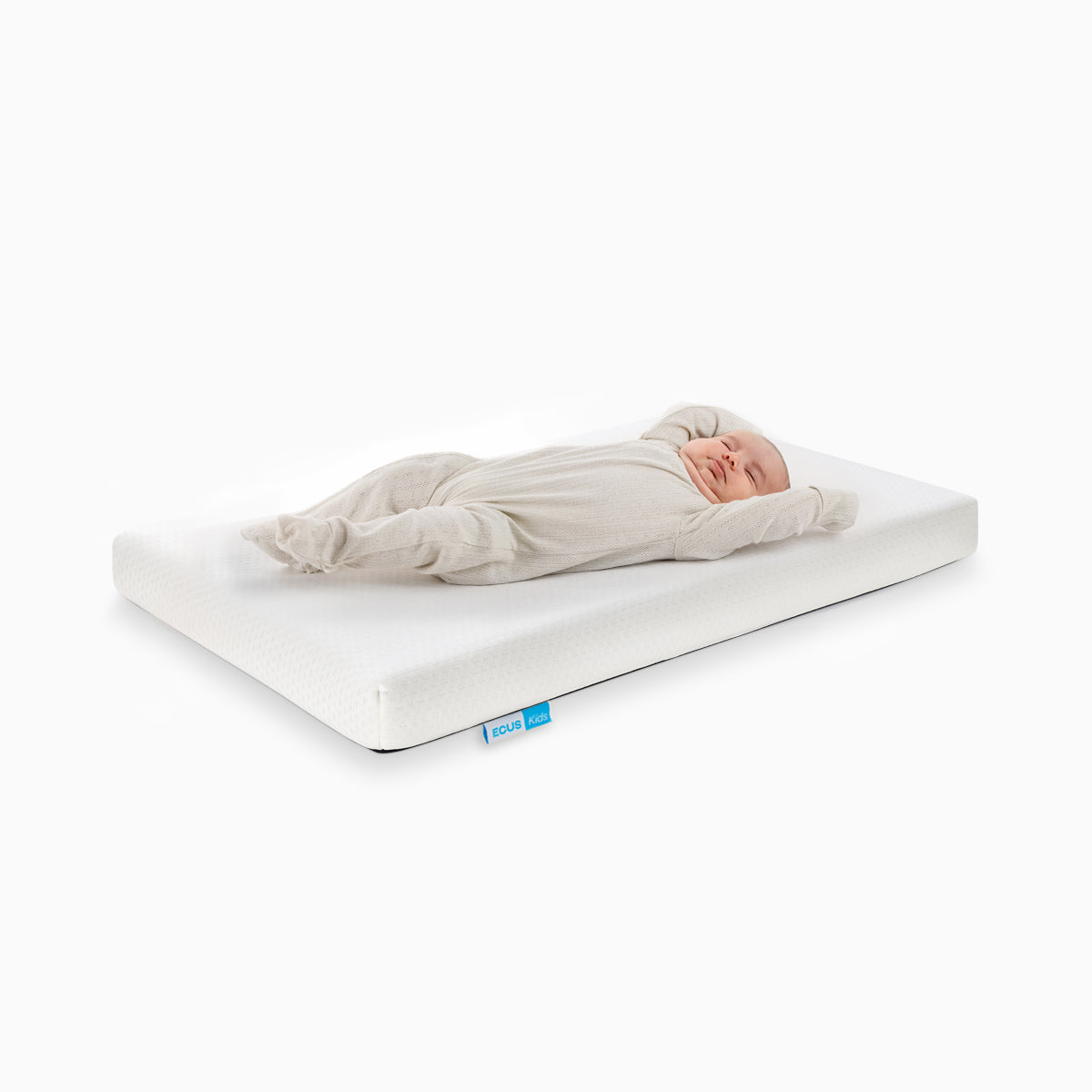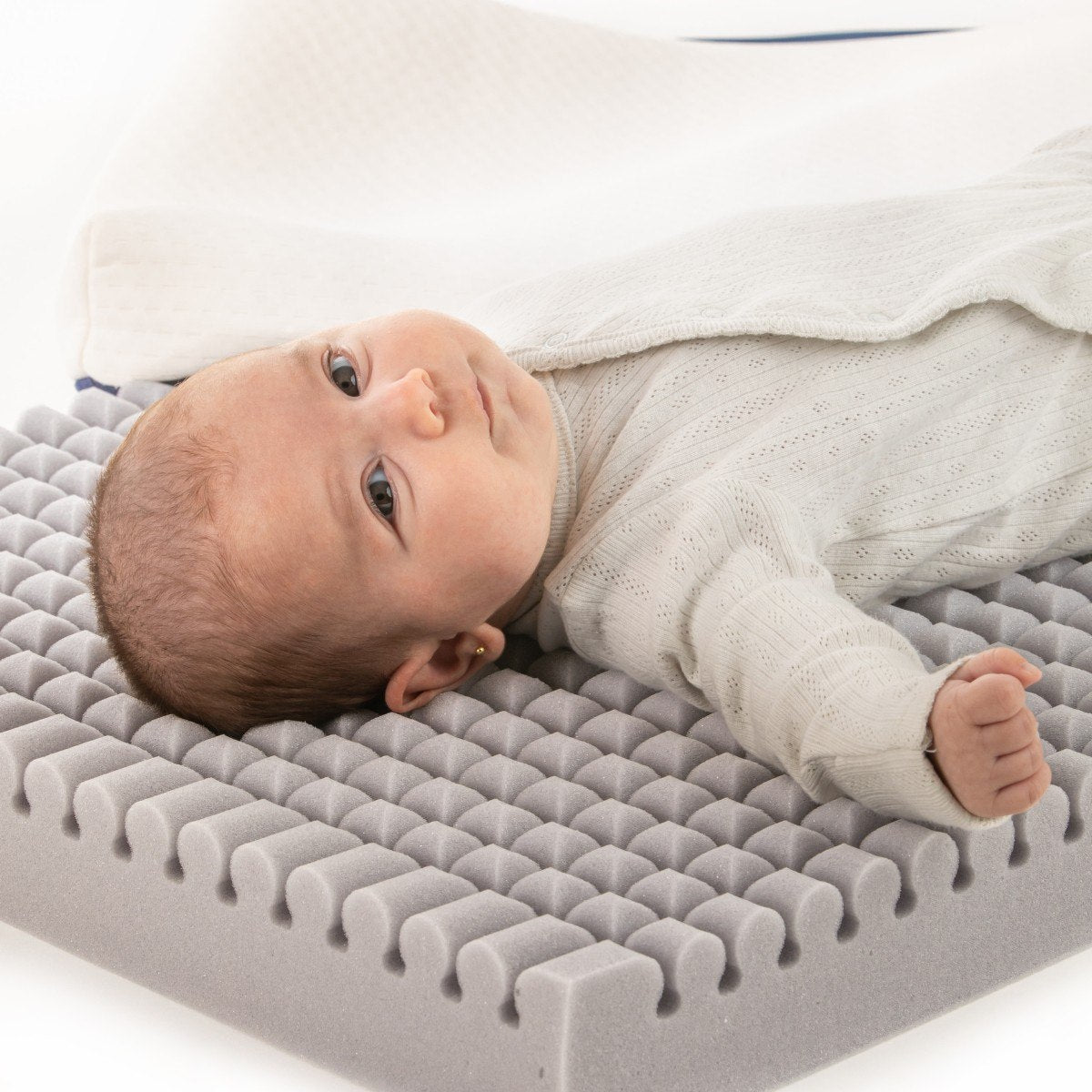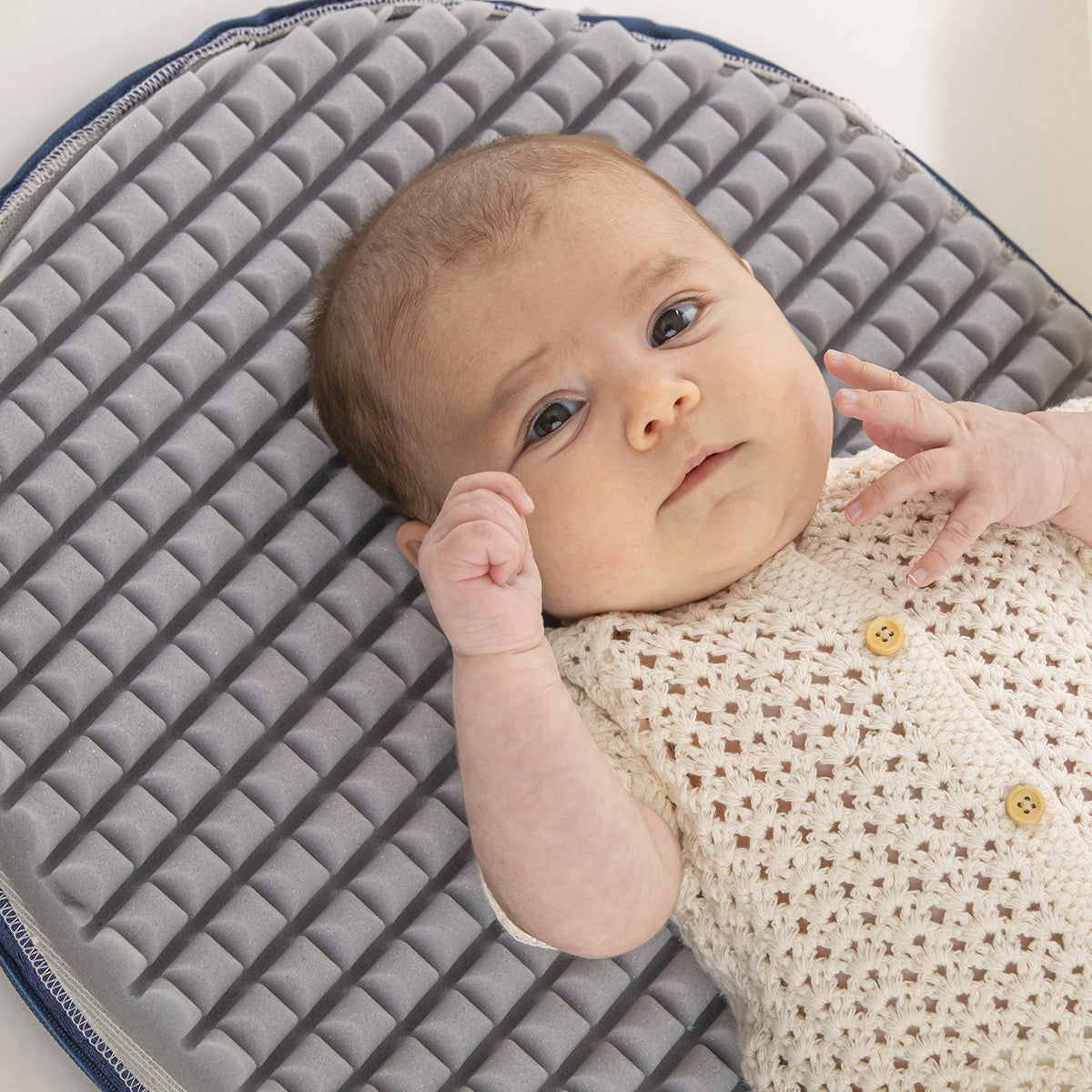Plagiocephaly, more commonly known as flat head syndrome, consists of an asymmetrical distortion of the skull that primarily affects babies during their first months of life and can originate from biological or positional factors.
This problem mainly occurs during the first months of life of newborns because the bones of the skull are still not fused, allowing for childbirth through the birth canal and the rapid growth of the brain.
**Positional plagiocephaly or flat head can produce asymmetries in the face or head, bulges in the skull, and misaligned ears.** But it is not just an aesthetic problem. It can also lead to muscular torticollis, otitis, astigmatism, and even cognitive delay that can affect motor development, social skills, or language.
In recent years, plagiocephaly has been on the rise due to pediatricians' recommendation to have children sleep on their backs to avoid SIDS or sudden infant death syndrome. To prevent it, excessive pressure on the baby's head should be avoided for long periods of time.
Crib Mattress Against Flat Head
To prevent plagiocephaly, the surface on which the baby rests plays a very important role, that is, the crib mattress, stroller... **The mattress must have the appropriate firmness, be firm, but not rigid.** The best recommendation is to buy a quality product that includes the necessary characteristics in its design and manufacturing premises to guarantee optimal performance for the prevention of this pathology.
At Ecus Kids, we have the series of
Care mattresses, specifically designed to treat and prevent plagiocephaly. The surface on which the baby rests generates numerous support points, helping to reduce the pressure exerted on their head by up to 70%. They are mattresses with
health certification from the Spanish Agency of Medicines and Health Products (
AEMPS).
Recommendations to Avoid Flat Head
In addition to the mattress, there are several behaviors that can help prevent positional plagiocephaly in newborns. Here are a series of very useful tips to practice at home and avoid having the baby always in the same position:
- **Tummy Time:** Whenever the baby is awake and under supervision, we will try to place them face down for as long as possible. This practice will encourage the strengthening of the newborn's neck muscles, prompting them to move their head.
- **Opposite Side of the Crib:** Vary the position in which we place the baby in the crib, so that some days they sleep with their head towards the foot of the crib and others with their head towards the headboard. This way, we will encourage the baby to move their head on their own, motivated by different visual stimuli.
**- Turn your Baby’s Head:** When the baby is resting on their back, we will try to change the position of their head. The deformity in the baby's head occurs from maintaining prolonged states of time in the same posture.
**- Switch Your Arms:** To prevent the baby's head from always resting on the same point, we will alternate the arm with which we hold the baby. This way, we will minimize the risks of deformity. Thanks to these simple recommendations and our crib mattresses, we can help prevent flat head in our newborn.














